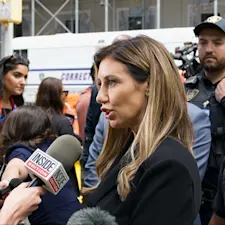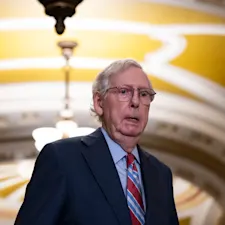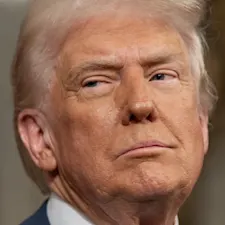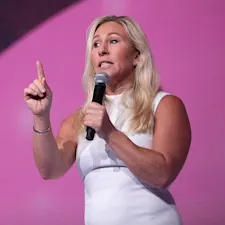
Democrats in the Wilderness: How the Party Hit a Historic Low
U.S. Senators Chuck Schumer, Cory Booker, and Ron Wyden at a press conference to unveil the Cannabis Administration and Opportunity Act on May 1, 2024. Photo courtesy of United States Congress, Office of Charles Schumer. Public domain.
If you think the Democratic Party is having a rough year — you're not wrong. But even seasoned political watchers didn't see this nosedive coming. New polls show Democrats are sitting at record-low favorability numbers — even compared to President Donald Trump, whose own approval ratings remain stubbornly underwater.
So, what's going on here? How did one of the two American political parties lose the support of its base?
The Numbers Don't Lie — And They Aren't Pretty
Even on a surface level, the Democrats' numbers look dismal: Just 29% of Americans hold a favorable view of the Democratic Party, according to a new CNN poll.
That's not just low — it's the lowest ever recorded by CNN since they started tracking this in 1992. A separate NBC News poll puts the number even lower — 27%.
That's roughly a 20-point drop from January 2021, when Democrats were riding high after President Trump's first term ended. This dip isn't just from opposition or swing voters, either — Democrats are losing ground with their base. Only 63% of Democrats and Democratic-leaning independents still view the party favorably, down from 81% at the start of President Biden's administration, according to CNN.
While the GOP can't exactly celebrate this blow to their chief rivals — the Republican Party clocks in with a 36% favorability rating — they're at least trending higher.
So, What Happened?
The decline seems to be caused by a combination of dissatisfaction, infighting, and missed opportunities.
The latest spark? A Republican-authored spending bill to avoid a government shutdown that 10 Senate Democrats — including Minority Leader Chuck Schumer — allowed by voting to end debate and advancing the bill to a final floor vote. Prolonging debate on the bill, in a process called filibustering, would most likely have killed it.
The move to end debate on the bill, viewed by many grassroots Democrats as capitulation even though only one Senate Democrat voted for it in the final vote, ignited outrage. Progressive organizers like Indivisible called outright for Schumer's resignation. According to their statement, 91% of their national leadership voted to demand he step down.
"After weeks of constituents demanding that Democrats use this rare, precious point of leverage on the government funding bill, Schumer did the opposite," said Indivisible co-director Ezra Levin in a release reported by Politico, "He led the charge to wave the white flag of surrender."
The resentment and fury show no signs of abating. Even Schumer's book tour had to be paused due to protests and security concerns, according to NBC News.
Who's in Charge Again?
Another part of the Democratic Party's problem is its leadership — or rather, the perception that there isn't any.
When asked who best represents Democratic values, the top answers were scattered: Representative Alexandria Ocasio-Cortez (10%), former Vice President Kamala Harris (9%), Independent Senator Bernie Sanders (8%), and Minority Leader of the House Hakeem Jeffries (6%). A whopping 30% didn't name anyone at all. As one respondent said to the CNN poll, "No one. That's the problem."
That fragmentation is troubling for a party trying to regroup in the wake of a devastating election loss. Even newer faces like Sen. Elissa Slotkin — who delivered the official Democratic response to Trump's latest address — remain virtually unknown to most Americans.
Voters Want a Fight — But Not Everyone's Ready to Brawl
So, what are the dissatisfied Democratic voters looking for? No compromise.
According to the NBC poll, nearly two-thirds of Democratic voters want their party to hold the line against Trump, even if that means legislative gridlock.
This is a dramatic reversal from 2017 when most Democrats wanted their leaders to find common ground with Trump. Now, many see that as a losing strategy. Elizabeth Joyce, a technology project manager and respondent to the NBC poll, expressed that thought clearly stating, "I'm scared that compromising will lead to the downfall of our democracy, to only be slightly hyperbolic. It's really scary seeing the things being done, the things being slashed left and right without any regard for the outcome," as reported by NBC News.
But not all Democrats agree. Some, like Florida data analyst Jason Howard, argue that without at least some give-and-take, nothing will get done. "In order to get some wins we will have to give the conservative party some wins as well," he said, according to NBC News. "We're definitely not going to get anything done in the next two years, or at least until this Congress is over, if we don't at least approach them with some give and take."
What Comes Next?
If these trends hold, Democrats could face a brutal 2026 midterm cycle.
While they currently hold a razor-thin advantage in congressional preference polls — 48% to 47%, according to NBC News — it's hardly a cushion. And history hasn't been kind to parties out of step with their base.
A party without enthusiasm, unity, or leadership isn't just unpopular — it's potentially unelectable. So, a pivot is needed, but in what direction? Should Democrats change their message? Their messengers? Should they embrace their centrist wing or their progressive wing?
Whatever the Democrats decide, they'll have to decide quickly to have any hope of coming back into power.
References: CNN Poll: Democratic Party's favorability drops to a record low | Democratic Party hits new polling low, while its voters want to fight Trump harder | Liberal group calls for Schumer to step down as minority leader after spending bill vote | In the government shutdown battle, Chuck Schumer underestimated Mike Johnson | Chuck Schumer postpones book events due to 'security concerns' amid Democratic backlash over shutdown fight | How some Senate Democrats sided with Republicans to vote against government shutdown























